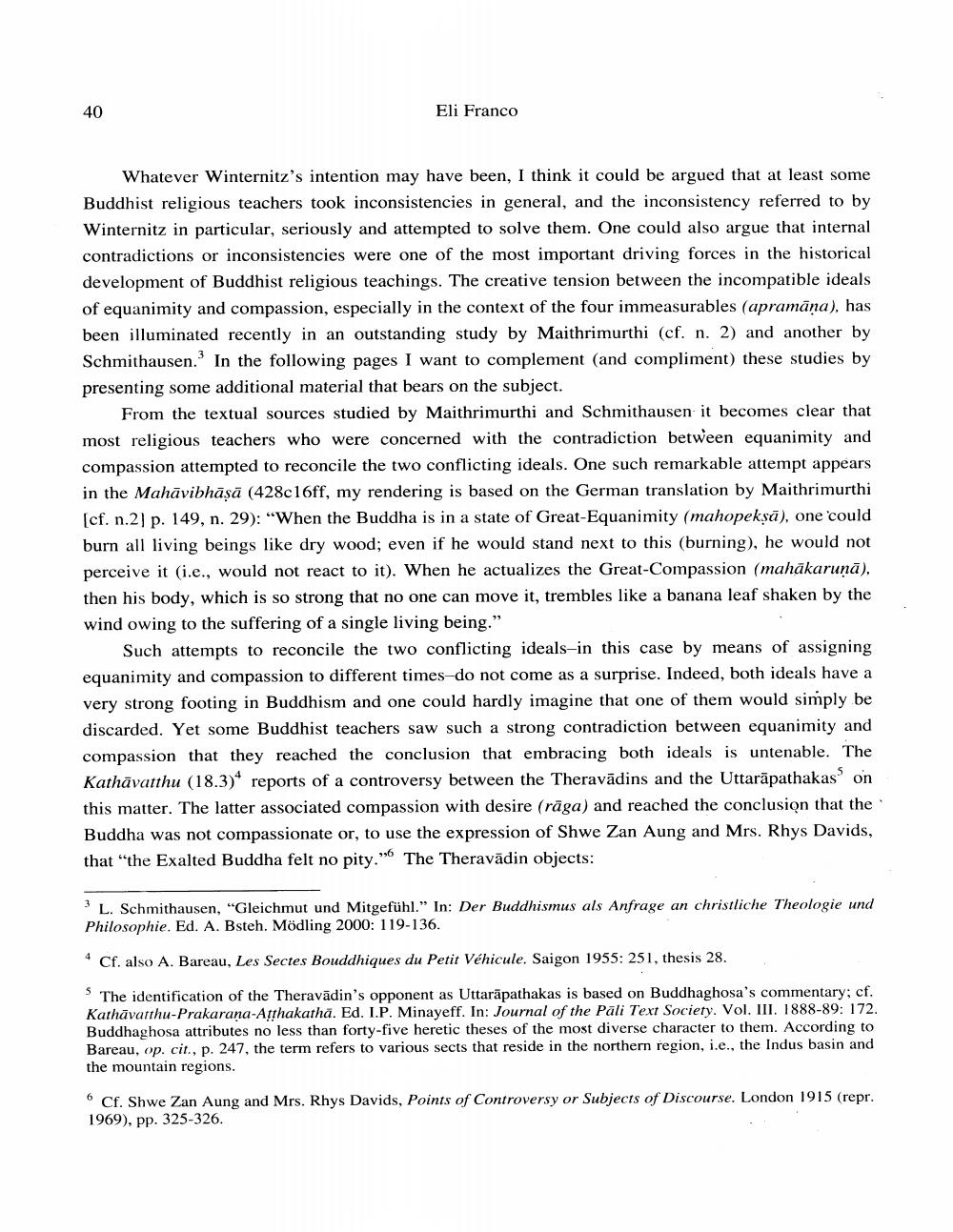Book Title: Did Buddha Have Desires Author(s): Eli Franco Publisher: Eli Franco View full book textPage 2
________________ 40 Eli Franco Whatever Winternitz's intention may have been, I think it could be argued that at least some Buddhist religious teachers took inconsistencies in general, and the inconsistency referred to by Winternitz in particular, seriously and attempted to solve them. One could also argue that internal contradictions or inconsistencies were one of the most important driving forces in the historical development of Buddhist religious teachings. The creative tension between the incompatible ideals of equanimity and compassion, especially in the context of the four immeasurables (apramāņa), has been illuminated recently in an outstanding study by Maithrimurthi (cf. n. 2) and another by Schmithausen. In the following pages I want to complement and compliment) these studies by presenting some additional material that bears on the subject. From the textual sources studied by Maithrimurthi and Schmithausen it becomes clear that most religious teachers who were concerned with the contradiction between equanimity and compassion attempted to reconcile the two conflicting ideals. One such remarkable attempt appears in the Mahāvibhāṣā (428c16ff, my rendering is based on the German translation by Maithrimurthi (cf. n.2) p. 149, n. 29): “When the Buddha is in a state of Great-Equanimity (mahopekṣā), one could burn all living beings like dry wood; even if he would stand next to this (burning), he would not perceive it (i.e., would not react to it). When he actualizes the Great-Compassion (mahākarunā), then his body, which is so strong that no one can move it, trembles like a banana leaf shaken by the wind owing to the suffering of a single living being." Such attempts to reconcile the two conflicting ideals-in this case by means of assigning equanimity and compassion to different times do not come as a surprise. Indeed, both ideals have a very strong footing in Buddhism and one could hardly imagine that one of them would simply be discarded. Yet some Buddhist teachers saw such a strong contradiction between equanimity and compassion that they reached the conclusion that embracing both ideals is untenable. The Kathāvatthu (18.3)* reports of a controversy between the Theravādins and the Uttarāpathakas on this matter. The latter associated compassion with desire (rāga) and reached the conclusion that the Buddha was not compassionate or, to use the expression of Shwe Zan Aung and Mrs. Rhys Davids, that "the Exalted Buddha felt no pity." The Theravādin objects: * L. Schmithausen, "Gleichmut und Mitgefühl." In: Der Buddhismus als Anfrage an christliche Theologie und Philosophie. Ed. A. Bsteh. Mödling 2000: 119-136. * Cf. also A. Bareau, Les Sectes Bouddhiques du Petit Véhicule. Saigon 1955: 251, thesis 28. $ The identification of the Theravādin's opponent as Uttarāpathakas is based on Buddhaghosa's commentary; cf. Kathāvarthu-Prakarana-Atthakatha. Ed. I.P. Minayeff. In: Journal of the Päli Text Society. Vol. III. 1888-89: 172. Buddhaghosa attributes no less than forty-five heretic theses of the most diverse character to them. According to Bareau, op. cit., p. 247, the term refers to various sects that reside in the northern region, i.e., the Indus basin and the mountain regions. • Cf. Shwe Zan Aung and Mrs. Rhys Davids, Points of Controversy or Subjects of Discourse. London 1915 (repr. 1969), pp. 325-326.Page Navigation
1 2 3 4 5 6 7 8 9
